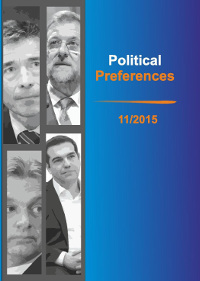

Taking part in an election, political parties implement their planned strategic activities, which involve making choices regarding competitive goals and maximizing the usefulness of the resources they have. A significant context of party strategies is political uncertainty. The paper discusses the importance of political uncertainty in three areas. First, political uncertainty is an instrument affecting the character of political competition. In the second area, the article presents its role as a factor of competition in the process of campaigning for votes. It also points out that political uncertainty may be a mechanism of institutionalizing new political parties. Some of the implemented party strategies, influencing the level of political uncertainty, assume possible electoral manipulations.
Key words:
electoral strategies, political uncertainty, political manipulations
Download files
Citation rules

No. 11 (2015)
Published: 2015-06-01
 10.31261/polpre
10.31261/polpre